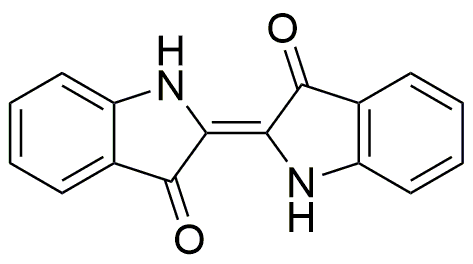Indigo (synthetic) is widely utilized in research focused on:
- Dyes and Pigments: Commonly used in the textile industry for dyeing fabrics, providing a rich blue color that is both vibrant and long-lasting.
- Biotechnology: Employed in various biological assays and experiments due to its ability to act as a pH indicator, helping researchers monitor changes in acidity during reactions.
- Pharmaceuticals: Investigated for its potential therapeutic properties, including anti-inflammatory and antioxidant effects, making it a candidate for drug development.
- Cosmetics: Incorporated into skincare products for its natural coloring properties, offering a safe alternative to synthetic dyes while enhancing product appeal.
- Art and Craft: Used by artists for its unique color and properties, allowing for the creation of natural dyes in painting and crafting, promoting eco-friendly practices.
General Information
Properties
Safety and Regulations
Applications
Indigo (synthetic) is widely utilized in research focused on:
- Dyes and Pigments: Commonly used in the textile industry for dyeing fabrics, providing a rich blue color that is both vibrant and long-lasting.
- Biotechnology: Employed in various biological assays and experiments due to its ability to act as a pH indicator, helping researchers monitor changes in acidity during reactions.
- Pharmaceuticals: Investigated for its potential therapeutic properties, including anti-inflammatory and antioxidant effects, making it a candidate for drug development.
- Cosmetics: Incorporated into skincare products for its natural coloring properties, offering a safe alternative to synthetic dyes while enhancing product appeal.
- Art and Craft: Used by artists for its unique color and properties, allowing for the creation of natural dyes in painting and crafting, promoting eco-friendly practices.
Documents
Safety Data Sheets (SDS)
The SDS provides comprehensive safety information on handling, storage, and disposal of the product.
Product Specification (PS)
The PS provides a comprehensive breakdown of the product’s properties, including chemical composition, physical state, purity, and storage requirements. It also details acceptable quality ranges and the product's intended applications.
Certificates of Analysis (COA)
Search for Certificates of Analysis (COA) by entering the products Lot Number. Lot and Batch Numbers can be found on a product’s label following the words ‘Lot’ or ‘Batch’.
*Catalog Number
*Lot Number
Certificates Of Origin (COO)
This COO confirms the country where the product was manufactured, and also details the materials and components used in it and whether it is derived from natural, synthetic, or other specific sources. This certificate may be required for customs, trade, and regulatory compliance.
*Catalog Number
*Lot Number
Safety Data Sheets (SDS)
The SDS provides comprehensive safety information on handling, storage, and disposal of the product.
DownloadProduct Specification (PS)
The PS provides a comprehensive breakdown of the product’s properties, including chemical composition, physical state, purity, and storage requirements. It also details acceptable quality ranges and the product's intended applications.
DownloadCertificates of Analysis (COA)
Search for Certificates of Analysis (COA) by entering the products Lot Number. Lot and Batch Numbers can be found on a product’s label following the words ‘Lot’ or ‘Batch’.
*Catalog Number
*Lot Number
Certificates Of Origin (COO)
This COO confirms the country where the product was manufactured, and also details the materials and components used in it and whether it is derived from natural, synthetic, or other specific sources. This certificate may be required for customs, trade, and regulatory compliance.


